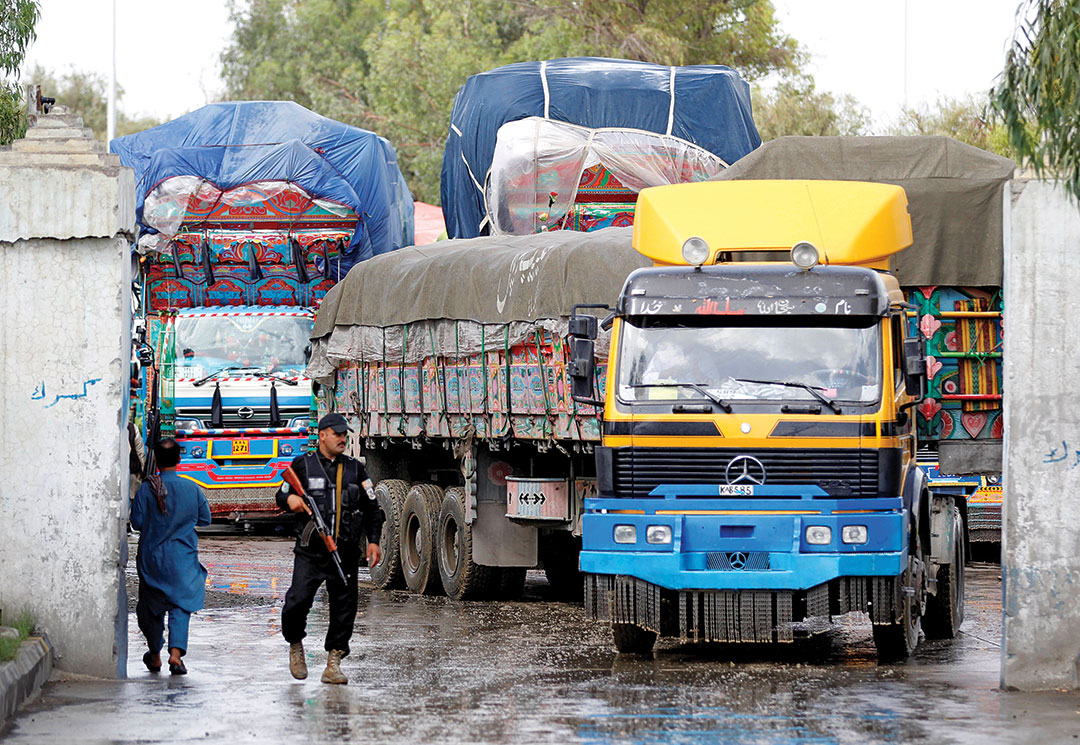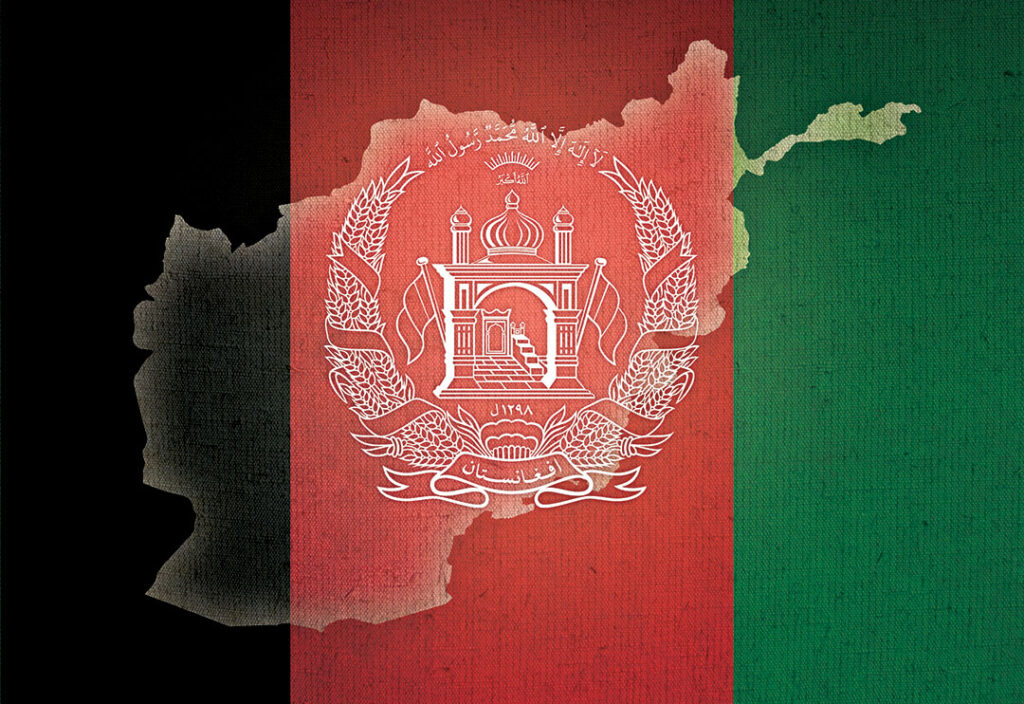A political settlement that honors the country’s Constitution would improve life in the region
AHMAD FARID FOROZI
PROGRAM MANAGER, Equality for peace and Democracy
Afghanistan was largely a peaceful country until the end of Sardar Daoud Khan’s rule in 1978. Following the intrusion of the former Soviet Union in Afghan politics, and later its invasion, Afghanistan and its people have become victims of continuous armed conflicts and insecurity. The ongoing conflict created a situation in which Afghan society, particularly youths, became radicalized by foreign groups that initially arrived in Afghanistan to oppose the Soviet invasion. National and transnational radical groups further complicated the political and security situation, and Afghanistan became a safe haven for global terrorist groups such as al-Qaida, which plotted terror attacks on U.S. soil on September 11, 2001.
The U.S. intervention that led to the collapse of the Taliban regime in 2001 provided Afghanistan with a rare opportunity to establish a new Constitution and political order based on democratic principles and improve the social and economic conditions of its people. Billions of dollars in foreign aid as well as military and political support by the international community, led by the government of the United States, brought significant improvements in the social and economic fabrics of Afghan society. Afghans’ life expectancy at birth increased from 56 years in 2001 to 64 years in 2016. Gross domestic product (GDP) per capita increased from an estimated $197 in 2002 to $544 in 2018. Almost 10 million boys and girls are now going to school, and 13,000 new schools have been established.
However, as the Afghan government and its international allies were focusing on the country’s reconstruction and development, the resurgence of the Taliban and other armed opposition groups (AOGs) was looming. The gradual expansion of their distractive activities poses serious security threats to the lives of Afghans and destabilizes the country. The United Nations Assistance Mission in Afghanistan (UNAMA) reported more civilian casualties (3,804 deaths and 7,189 injuries) in the ongoing conflict in 2018 than at any time since 2009, when UNAMA began keeping records.
Additionally, the ongoing conflict slowed Afghanistan’s economic growth and distorted the development process. The Afghan economy, which was growing at a record rate of 21.4% in 2009, slowed down to 2.7% in 2017, and foreign direct investment collapsed from 4.4% of total GDP in 2005 to 0.3% in 2017. Local businesses began moving their capital to stable markets out of the country, contributing to a surge in the unemployment rate, particularly among new graduates. Frustrated youth, left or plan to leave the country in search of a viable living elsewhere.

On the other hand, the ongoing conflict is becoming politically and economically costly for the AOGs and their foreign supporters. The Afghan government and its international allies, led by the U.S., have launched military and diplomatic efforts that have been highly effective in building pressure on the AOGs and marginalizing their foreign supporters. This multifaceted effort was necessary and an opportunity for parties involved in the ongoing conflict to realize that they cannot achieve their objectives solely through violence and that peaceful negotiation of legitimate demands is in everybody’s interest.
After almost 18 years of violence, the remarkable move toward peace took place when Gulbuddin Hekmatyar, leader of Hezb-e-Islami party, once a prominent group in the fight against the Soviet forces and later in civil war, signed a peace agreement with the national unity government in September 2016. The Afghan government likewise made a landmark offer for peace to the Taliban at the February 2018 peace and security cooperation conference in Kabul. This offer was further elaborated in an official document called “Road Map for Achieving Peace” and presented November 27-28, 2018, to the international community at the Geneva conference on Afghanistan.
This peace road map represents the Afghan government’s most comprehensive vision and political agenda for potential intra-Afghan talks. The Afghan government’s peace plan was followed by a unilateral cease-fire announcement by the Afghan president to mark Eid al-Fitr. The Taliban responded to the cease-fire by announcing their own three-day cease-fire. These remarkable incidents were historical concessions reflecting the Taliban’s unprecedented inclination to negotiate a peaceful settlement of the ongoing conflict.
The Taliban refused to meet directly with the Afghan government and demanded a two-step negotiation process: first, addressing international aspects of a potential peace agreement (such as the withdrawal of U.S. troops and the future of their relationship with transnational terrorist groups), and second, talks with the Afghan government and political groups on internal affairs (such as constitutional issues and organization of the future government). To this end, the U.S. launched a full-fledged diplomatic negotiation process with the Taliban in Doha, Qatar, led by its former envoy to Afghanistan and Iraq, Zalmay Khalilzad.
As of spring 2019, the negotiations between the Taliban and the U.S. representative had gone through seven rounds of intense talks, and progress has been made, based on the remarks of both parties. Of course, the most challenging part of the peace negotiations, intra-Afghan talks, had not started.
But this is worth pursuing: Considering the strategic location of Afghanistan, a peaceful settlement to the ongoing conflicts offers the potential for positive contribution to economic growth and social development for the people of Afghanistan and surrounding countries.
How peace and reconciliation could improve Afghanistan’s economy and society Economic Growth Prospects
The ongoing violence in Afghanistan has created regional instability and led to distrust between Afghanistan and Pakistan. These barriers have had deleterious impacts on bilateral trade between Afghanistan and Pakistan and on regional trade between South and Central Asia.
For instance, trade volume between Afghanistan and Pakistan dropped from $1.5 billion in 2017 to $1 billion in 2018, and the current trade volume between South and Central Asia is almost negligible. A peaceful Afghanistan can boost the prospects for economic benefits from regional cooperation by connecting industries in South Asia with raw material and energy in Central Asia and facilitate the export of South Asian goods and services to markets in Afghanistan and other Central Asian countries.

Indeed, as a broad land bridge between South and Central Asia, Afghanistan has the potential to become a regional trade hub and make huge gains from economic exchanges between neighboring regions and countries. Jobless Afghan youths, who are currently at high risk of migration or indoctrination by radical groups and AOG, will find employment opportunities. And Afghanistan’s agriculture products, minerals and handicrafts will easily reach lucrative South Asian markets. Implementation of major energy transfer projects, which are at a standstill because of insecurity, will resume.
TAPI and CASA-1000, two major energy transfer projects initiated many years before, have not been realized because of the activities of insurgents in Afghanistan and the tribal areas of Pakistan. The Turkmenistan-Afghanistan-Pakistan-India (TAPI), a 1,735-kilometer gas pipeline project, was kicked off in the 1990s with a view to monetize Turkmenistan’s gas reserves via Afghanistan to Pakistan and India. The project’s progress has been repeatedly inhibited by regional insecurity and political tensions among the participating countries.
This project will have the capacity to supply 32.8 billion cubic meters of gas per year to two of the largest economies of South Asia — India and Pakistan — through Afghanistan. Afghanistan would use 16% of this gas and be entitled to receive transit fees from the other TAPI buyers for the use of its territory.
CASA-1000 is a transmission line that transfers hydroelectric power from Kyrgyzstan and Tajikistan to Afghanistan and Pakistan (and potentially to India). Both of these mountainous countries have a surplus of electricity during the summer, while Afghanistan and Pakistan suffer from chronic electricity shortages for their fast-growing household and industrial demand. Frequent power cuts in Pakistan during the summer inhibit industrial production, harm small businesses, and lead to job losses. Meanwhile, millions of people still live without electricity in these countries.
Implementation of these and other similar economic projects will become possible if peace and stability are restored in Afghanistan. Indeed, such economic cooperation would lead to prosperity not only for Afghans, but also for the people of the Central and South Asian regions.
Social Development Prospects
Thanks to the international community’s assistance, Afghan society has accomplished many social improvements. However, the Afghan people still face numerous social problems originating from violence and insecurity all over the country. The ongoing conflict has weakened the state, impeded development efforts and minimized service delivery capacity of state institutions and international donor agencies.
More than half of Afghans (54.5%) still live below the poverty line; many Afghans die from treatable diseases from lack of access to modern health care; and 25% to 30% of Afghans are unemployed. Jobless Afghan youths out of frustration either choose to migrate illegally to other countries or sometimes become victims of indoctrination and brainwashing by radical groups, making the ongoing conflict even more complicated.
With a peaceful solution to the ongoing conflict, the Afghan state will have access to sources of revenue to ensure delivery of vital services to Afghan citizens. Most of the schools, which are closed due to either insecurity or lack of funding, can reopen. Access to education can equip youths with knowledge and skills necessary to find jobs and prevent them from joining unregistered madrasas that teach students radical ideologies and violence. A prosperous Afghanistan will provide abundant opportunities for economic activities and employment inside Afghanistan, which will reduce illegal migration of educated Afghan youths and a brain drain.
Last but not the least, a peaceful region can provide opportunities for cultural cooperation and people-to-people diplomacy between Afghanistan and neighboring countries. Meaningful cultural, civic and social exchanges can help the people of the region — from policymakers to ordinary citizens — develop better understanding of the suffering and challenges of the Afghan people and negative effects of radical ideologies and build support for the Afghan people’s demands for enduring peace and widespread tolerance.
As reconciliation efforts approach the most decisive phase of intra-Afghan talks, it is time for the Afghan government and political and civil society groups to work closely with each other and prepare for going to the negotiation table with a unified yet reasonable position. This may include a joint review of the Afghan government’s peace and reconciliation plan, “Road Map for Achieving Peace,” and adjustments of it based on the inputs from political parties, civil society and human right groups.
In case an end to the ongoing conflict is negotiated with the Taliban, the Afghan government would then need to fundamentally redefine and reorganize its economic and trade policies and strategies to fully exploit new economic opportunities. This may include analysis of patterns of regional economic cooperation in specific fields that are feasible in the short term and can incentivize commitment to peace by neighboring countries. Furthermore, inclusive social development policies must be prioritized — including integration of Taliban members, returnees and internally displaced people into society and a transitional justice process for ex-combatants to sustain peace and reduce the risk of further conflict.

